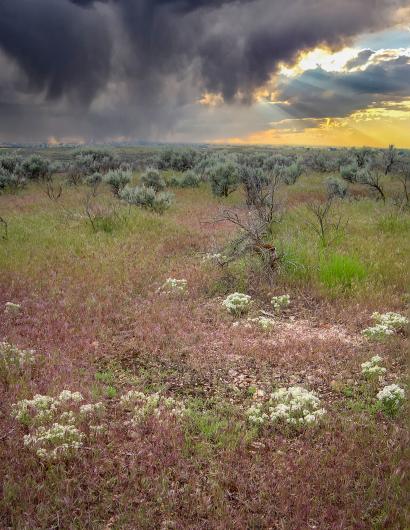BLM seeks public input on enhancements to slickspot peppergrass habitat in southwestern Idaho
Organization:
BLM Office:
Media Contact:
Boise, Idaho–The Bureau of Land Management (BLM) seeks input during a 30-day public comment period on an environmental assessment for slickspot peppergrass habitat. Slickspot peppergrass is a threatened, white-flowering plant that grows in southwestern Idaho’s sagebrush steppe, home to a variety of wildlife. The U.S. Fish and Wildlife Service recently designated slickspot peppergrass critical habitat in southwestern Idaho, including public lands managed by the BLM Four Rivers Field Office, and the Morley Nelson Snake River Birds of Prey National Conservation Area.
This study looks at treatments, such as aerial and ground spraying to remove invasive grasses and reseed. Treatments would be focused adjacent to existing slickspot peppergrass populations, and could be part of wildfire emergency stabilization and restoration activities.
“The BLM is committed to conserving slickspot peppergrass habitat through this proposed restoration plan. We expect to use a variety of methods to achieve these conservation objectives," said BLM Boise District Manager Tanya Thrift.
To ensure your written comments are included in the analysis, please submit them by November 26, 2023. Comments can be submitted via the BLM National NEPA Register at https://eplanning.blm.gov/eplanning-ui/project/2023055/510. To learn more about slickspot peppergrass, visit https://ecos.fws.gov/ecp/species/4027. For additional information, please contact Gillian Wigglesworth at 208-384-3300.
The BLM manages about 245 million acres of public land located primarily in 12 western states, including Alaska, on behalf of the American people. The BLM also administers 700 million acres of sub-surface mineral estate throughout the nation. Our mission is to sustain the health, diversity, and productivity of America’s public lands for the use and enjoyment of present and future generations.

